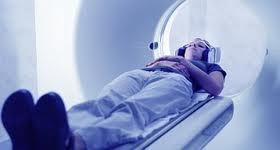por
Brendon Nafziger, DOTmed News Associate Editor | December 26, 2012
Whether children receive a CT scan or an ultrasound to diagnose appendicitis before surgery depends on what sort of hospital they're first seen at, according to a new study.
Computed tomography has emerged as one of the most sensitive modalities for figuring out if someone's appendix has become inflamed and needs to be removed. However, the abdominal CT used to check for appendicitis exposes patients to upwards of 25 millisieverts a scan — about eight times the average annual dose from naturally occurring background radiation. As a result, some doctors are interested in radiation-free alternatives for children, such as ultrasound, as kids are at higher risk for radiation-induced cancers than adults.
But abdominal ultrasound varies in its accuracy and isn't as readily available as CT. In fact, in a study published online Monday in the journal Pediatrics, researchers with Washington University School of Medicine in St. Louis found that kids first seen at a community hospital were more likely to receive a CT scan than if they went to a children's hospital. And both CT and ultrasound scans at community hospitals were not as sensitive as those performed in the children's hospital.



Ad Statistics
Times Displayed: 2839
Times Visited: 27 Fast-moving cardiac structures have a big impact on imaging. Fujifilm’s SCENARIA View premium performance CT brings solutions to address motion in Coronary CTA while delivering unique dose saving and workflow increasing benefits.
The researchers also found that although the vast majority of patients received some form of imaging before their surgeries, nearly one in 13 children who had their appendices removed did not actually have appendicitis.
"Widespread preoperative imaging did not eliminate unnecessary pediatric appendectomies," the researchers, led by Dr. Jacqueline M. Saito, a pediatric surgeon, wrote in the paper.
The number's not too surprising, though. Appendicitis is difficult to diagnose, as gastroenteritis, urinary tract infections, pneumonia and other conditions are easily mistaken for it, the authors said, and the "negative" appendicitis rate (where a removed appendix turns out to be normal) ranges from 4 to 13 percent.
How they stacked up
In the study, researchers retrospectively evaluated the cases of 423 children who were operated on at St. Louis Children's Hospital. Of these, 205 were first seen at a community hospital and referred to St. Louis, while 218 were both seen and treated at the children's hospital.
Of those initially evaluated at a community hospital, 9 percent received only an ultrasound scan (with no CT). Of those evaluated at the children's hospital, close to half (46 percent) received only an ultrasound, according to the study.
All told, 87 percent of community hospital-evaluated patients received a CT scan (including those who had both CT and ultrasound), while 43 percent of children's hospital-evaluated patients did.

